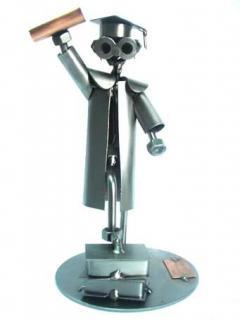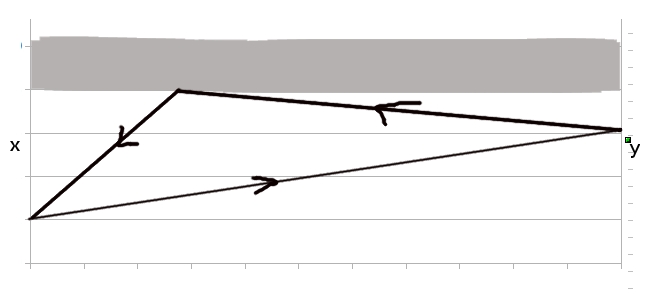Antineurons and learning from mistakes

Instead of the preface
In the recent past, fate brought me to the area of Neural Networks (NA). This question seemed to me extremely interesting and, what to hide, is not very promising. Oh, what open space can be opened only with one thought what could be done on the basis of the National Assembly, if only we could develop just a little more! And just recently an interesting (in my opinion, of course) concept came into my head. Oh yes, I do not in any way claim the truth and legitimacy of my judgments on the issue of the National Assembly, since, to be honest, I am an amateur in this area (I want to believe that only for now). Nevertheless, I invite the curious under Habrakat. I am waiting for (constructive opinions), I hope (for leniency) and I believe (for understanding).
Where do legs grow from?
Having recently heard the old phrase: “A man learns from mistakes,” and thinking about the National Assembly, I came to an unexpected hybrid of these structures. Actually, what was he like? An artificial neuron is an “analogue” of a living human neuron. Of course, the analogue is crude, but for good reason they are called in one word. As a rule, regardless of the structure of the NN, they are all trained on the right examples: the reference vector X is input, and the corresponding Y vector is output. The procedure is repeated until the N learns the information. I would compare this kind of training with the following situation. Put in front of a person a sheet of paper on which a straight line is drawn. Then we will show how a straight line is drawn (we put the pencil in one point of the sheet, without taking it away from the sheet, then let go). Repeat the procedure several times until a person remembers how a straight line is drawn. And finally, we offer the subject to draw the same line himself. Needless to say that a person will fail. It will be more accurate, but the line will not be straight. Not a reference straight. At this point in the story, it is time to cry out: “Aha!” - and move on to the next part of my thought.
')
Antineurons
As mentioned above, NA learn from the right examples. An artificial neuron is an “analogue” of a human, and, as was seen from the example, don’t show a straight line to a person, he will not draw it straight away. So how to be? Let's try to go from the reverse. If the reference sample does not give the desired effect, we will try the exact opposite - we will train the NA on errors! Thus, we will supply the wrong value of X to the input of a hypothetical network, and the corresponding value of Y will be fed to the output. And what happens in that case? And it will turn out that we will most roughly limit the space of options. Illustrating my reasoning on an example already familiar, we will offer the subject a ruler, that is, we will limit the space of options for drawing a line (read the sheet). Our hapless test subject must cope with such a trifling problem. So we got what we wanted - a straight line.
Actually, you ask, and what have the antineurons? So with all, I will answer you! If ordinary artificial neurons are trained in the correct sample, then let the neurons that study on the wrong data will be called antineurons. Deal with the terminology, go ahead.
Data formats
In a good way, the NA should work with three types of data:
- rules (they are true data, they are facts);
- restrictions (they are incorrect data);
- exceptions (because of every rule there are exceptions, yes?).
But if you take a closer look, the facts are the “lines” that are completely bounded above and below in the space of options. Here it is worth making a small lyrical digression and tell how I see this very space of options. As they say, it's better to see once, so here it is:

So, in the arena - the space of options! In the left corner - the input values, in the right - the weekend. Actually, everything between them is space itself. Recalling the example with the line, the picture will be approximately like this (the limited space is gray marked):

Well, the “rule” itself from the list above is also a line, only limited both from above and below. By the way, here it is worth mentioning such a moment that the fact can be unambiguous and ambiguous. By an unequivocal fact, I mean an unequivocal correspondence between X and Y. But an ambiguous fact is much more interesting. For example, such a fact: “I see the sky, that means I look up,” will not definitely correspond to the opposite. That is, if I look up, it is not at all necessary that I see the sky. On the graph, such an ambiguous fact will be presented as a slope. The input X will fall to the output Y, but, as we know from physics, the angle of incidence is equal to the angle of reflection, so the match will answer in some other X. But this is in an unlimited space of options! We will limit space to the condition “if there is no ceiling above me”. Then the fact “I see the sky, it means I look up” will correspond to the opposite “I look up, and if there is no ceiling above me, I see the sky”. It will look something like this (I reflected to the eye, so the accuracy of the picture is dubious, but the essence of the reasoning should be clear):

Actually, the rules and restrictions we have already touched. And what about the exceptions? So these same "additional conditions" and form exceptions. Well, the curtain of the evening ...
Why all this?
In my opinion, a similar system (with the necessary development and not the complete delusionalness of the above) will allow to solve problems, for example, in the same forecasting and decision-making. After all, with enough luggage data formats, you can set Y (I mean the goal), and the National Assembly will say what you need to implement, that is, put in line with X.
Afterword
Many thanks to all those who mastered this stream of thoughts! Thank you for attention.
UPD: Yes, and even a little wish. Dear citizens minus, I would like more specifics, so that you can continue to develop in mental terms.
Source: https://habr.com/ru/post/131135/
All Articles